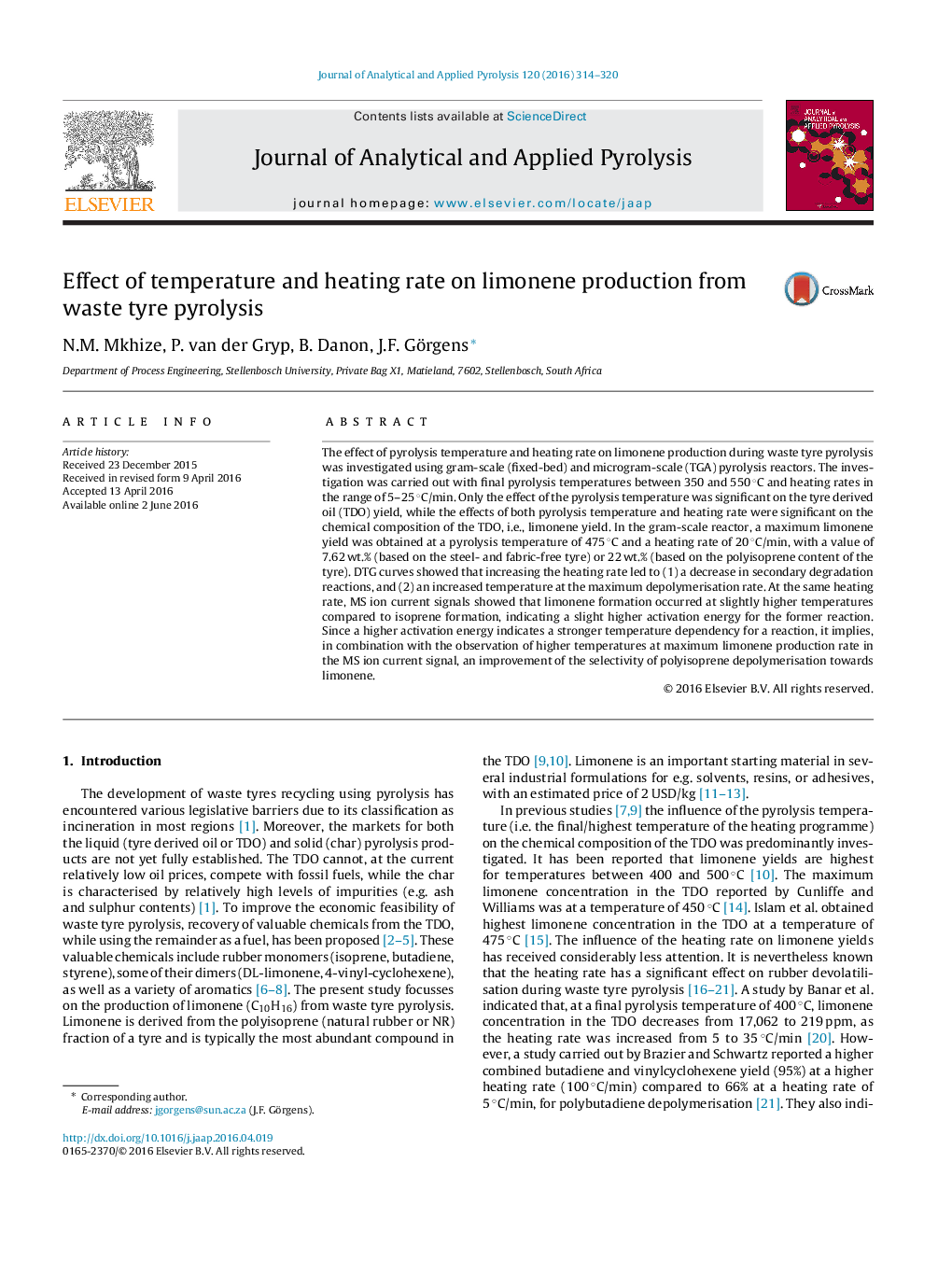| کد مقاله | کد نشریه | سال انتشار | مقاله انگلیسی | نسخه تمام متن |
|---|---|---|---|---|
| 1196556 | 1492957 | 2016 | 7 صفحه PDF | دانلود رایگان |
• Effect of the temperature was significant on the TDO yield.
• Effects of both the temperature and the heating rate were significant on the chemical composition of the TDO.
• Increases in the heating rate increased temperature at maximum devolatilisation rate.
• Increases in the heating rate increased temperature at maximum production rate of isoprene and limonene.
• Limonene peak was at slightly higher temperatures than the isoprene peak at same heating rate.
The effect of pyrolysis temperature and heating rate on limonene production during waste tyre pyrolysis was investigated using gram-scale (fixed-bed) and microgram-scale (TGA) pyrolysis reactors. The investigation was carried out with final pyrolysis temperatures between 350 and 550 °C and heating rates in the range of 5–25 °C/min. Only the effect of the pyrolysis temperature was significant on the tyre derived oil (TDO) yield, while the effects of both pyrolysis temperature and heating rate were significant on the chemical composition of the TDO, i.e., limonene yield. In the gram-scale reactor, a maximum limonene yield was obtained at a pyrolysis temperature of 475 °C and a heating rate of 20 °C/min, with a value of 7.62 wt.% (based on the steel- and fabric-free tyre) or 22 wt.% (based on the polyisoprene content of the tyre). DTG curves showed that increasing the heating rate led to (1) a decrease in secondary degradation reactions, and (2) an increased temperature at the maximum depolymerisation rate. At the same heating rate, MS ion current signals showed that limonene formation occurred at slightly higher temperatures compared to isoprene formation, indicating a slight higher activation energy for the former reaction. Since a higher activation energy indicates a stronger temperature dependency for a reaction, it implies, in combination with the observation of higher temperatures at maximum limonene production rate in the MS ion current signal, an improvement of the selectivity of polyisoprene depolymerisation towards limonene.
Journal: Journal of Analytical and Applied Pyrolysis - Volume 120, July 2016, Pages 314–320
